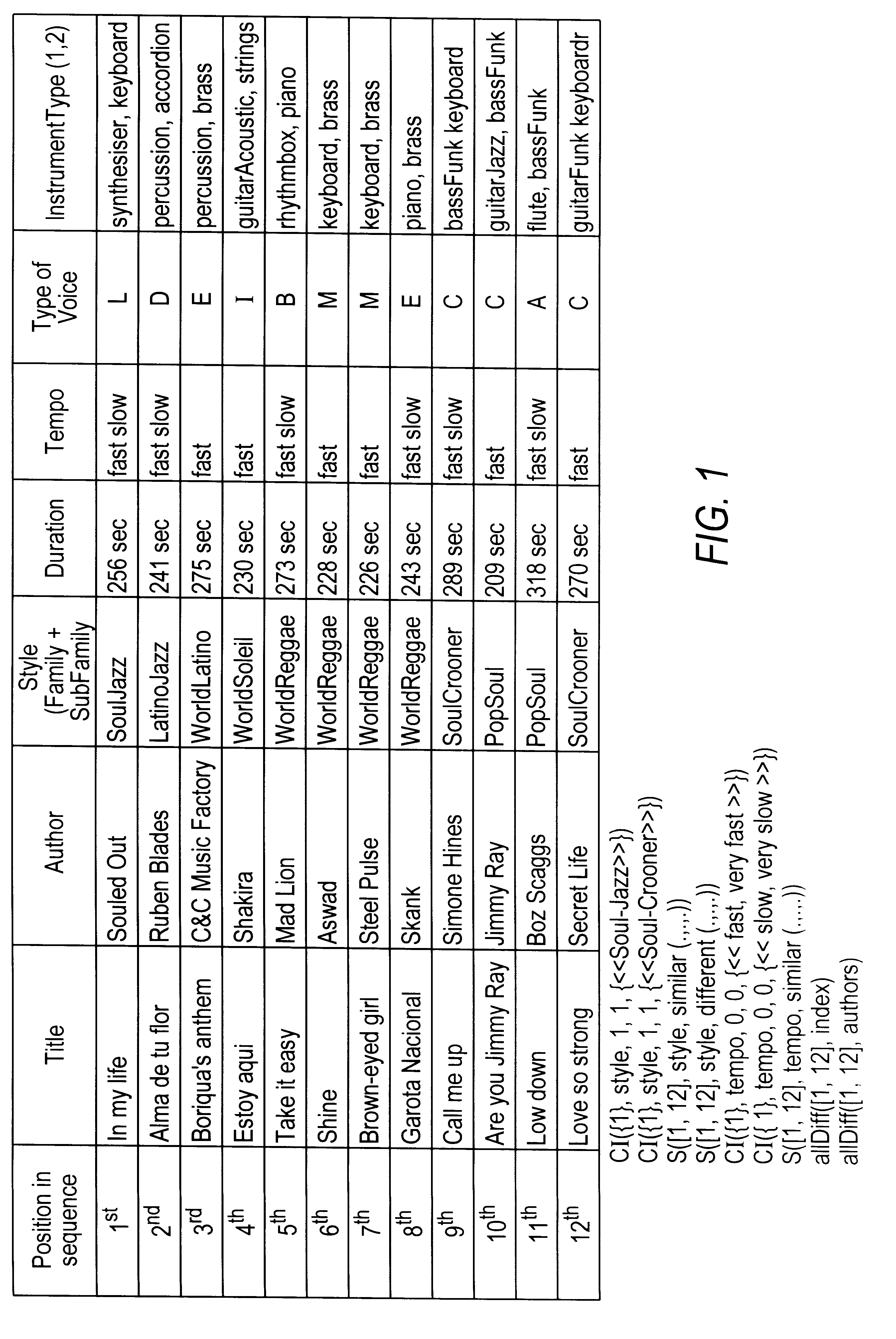Sequence generation using a constraint satisfaction problem formulation
a technology of satisfaction problem and sequence, applied in the field of sequence generation, can solve the problems of not considering the coherence>> of the sequence, and not enabling the control of similarity or dissimilarity of items making up the sequen
- Summary
- Abstract
- Description
- Claims
- Application Information
AI Technical Summary
Problems solved by technology
Method used
Image
Examples
Embodiment Construction
--RecitalComposer
In an application of the present invention to the generation of musical recitals (that is, sequences of musical pieces), the items in a sample database of Sony Music musical pieces were described using the following attributes:
index: an integer
title: a string of characters
author: a string of characters
Family: a family within a predetermined list of families (see below)
subFamily: a family within a predetermined list of sub-families (see below)
duration: an integer
rhythmType: a type of rhythm from within the taxonomy of possible rhythm types
tempo: a type of tempo from within the taxonomy of possible tempos
instrumentType1: a type of instrument from within the taxonomy of possible instrument types
instrumentType2: a type of instrument from within the taxonomy of possible instrument types
voiceType: a type of voice from within the taxonomy of possible voice types
The Family and sub-Family in this application were described using a predetermined taxonomy of musical styles whi...
PUM
 Login to View More
Login to View More Abstract
Description
Claims
Application Information
 Login to View More
Login to View More - R&D
- Intellectual Property
- Life Sciences
- Materials
- Tech Scout
- Unparalleled Data Quality
- Higher Quality Content
- 60% Fewer Hallucinations
Browse by: Latest US Patents, China's latest patents, Technical Efficacy Thesaurus, Application Domain, Technology Topic, Popular Technical Reports.
© 2025 PatSnap. All rights reserved.Legal|Privacy policy|Modern Slavery Act Transparency Statement|Sitemap|About US| Contact US: help@patsnap.com


